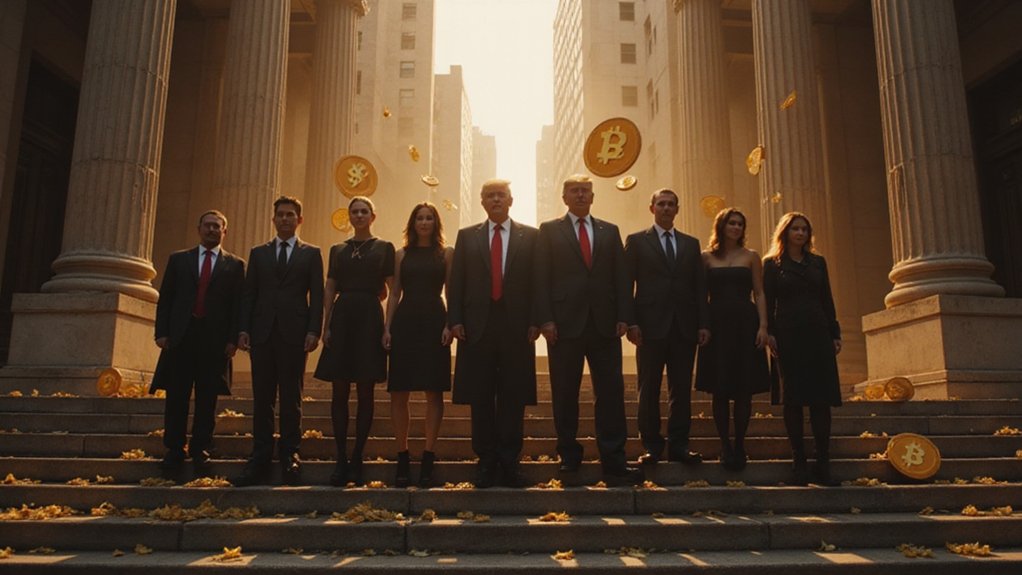While market participants have grown accustomed to Bitcoin’s programmed scarcity narrative, the current supply dynamics unfolding across exchanges suggest something far more immediate than the oft-cited 21 million coin cap. Long-term holders have accumulated over 800,000 BTC in the past 30 days—nearly 60 times the amount mined during the same period—creating what can only be described as a liquidity vacuum of remarkable proportions.
Long-term holders accumulating Bitcoin at 60 times the mining rate creates an unprecedented liquidity vacuum beyond traditional scarcity narratives.
This aggressive accumulation has coincided with exchange Bitcoin reserves plummeting to historic lows, with holdings now representing less than 11% of total supply for the first time since early 2018. The mathematics here are unforgiving: when institutional inflows surge by $2.2 billion while daily issuance remains locked at a post-halving 450-470 BTC, the inevitable result is a supply squeeze that would make commodity traders blush.
The timing proves particularly fascinating given Bitcoin’s maturation cycle. With over 19 million coins already in circulation—representing roughly 90% of the maximum supply—the remaining 1.5 million BTC will trickle into existence over the next century through increasingly difficult mining operations. Mining Bitcoin becomes increasingly energy-intensive over time, adding another layer of complexity to the supply equation.
Yet institutions continue accumulating as if discovering a finite resource for the first time, which, in fairness, many of them are. This institutional awakening has created an almost paradoxical situation where Bitcoin’s programmed predictability collides with market participants’ belated recognition of its scarcity mechanics.
Countries and enterprises now view BTC as a legitimate reserve asset, adding systemic demand layers that dwarf traditional retail participation. The result? A market where sell-side depth continues shrinking while buy-side pressure intensifies.
The implications extend beyond simple price appreciation. Reduced exchange liquidity fundamentally alters market microstructure, potentially amplifying volatility as fewer coins become available for trading. When long-term holders demonstrate such conviction—accumulating at rates that eclipse new supply by orders of magnitude—it signals a structural shift in Bitcoin’s ownership patterns.
Whether this supply squeeze triggers the bullish shock many anticipate depends largely on sustained institutional demand meeting increasingly constrained availability. The current dynamics suggest market participants are finally grasping what Bitcoin’s architects embedded into its code from day one: true scarcity in a world of infinite monetary expansion. Adding complexity to these dynamics, security breaches at major exchanges have influenced market sentiment and trading patterns throughout recent quarters. Meanwhile, creditor payouts from major exchange bankruptcies continue to add uncertainty to market dynamics, with billions in Bitcoin potentially returning to circulation at prices far below current market values.









